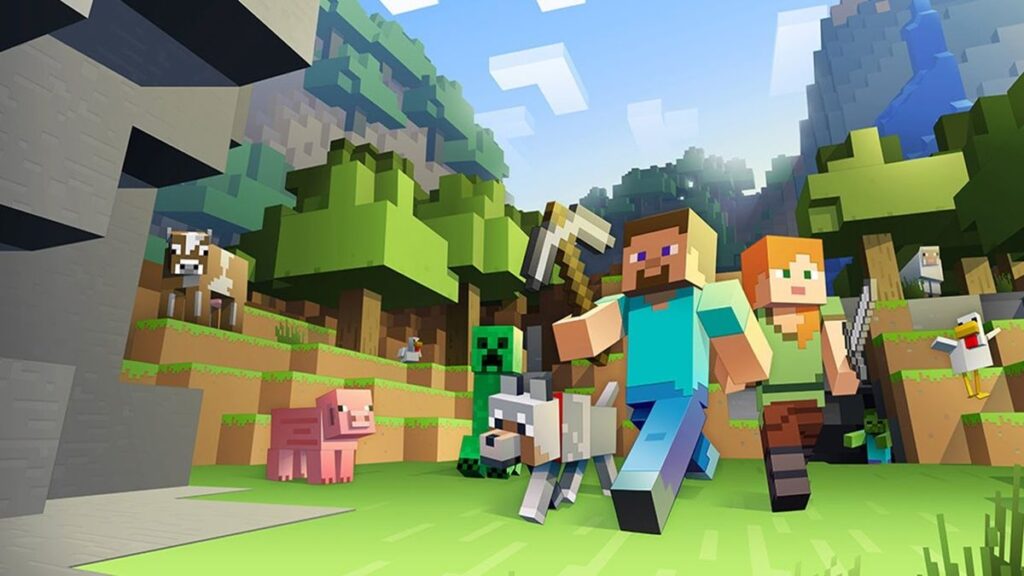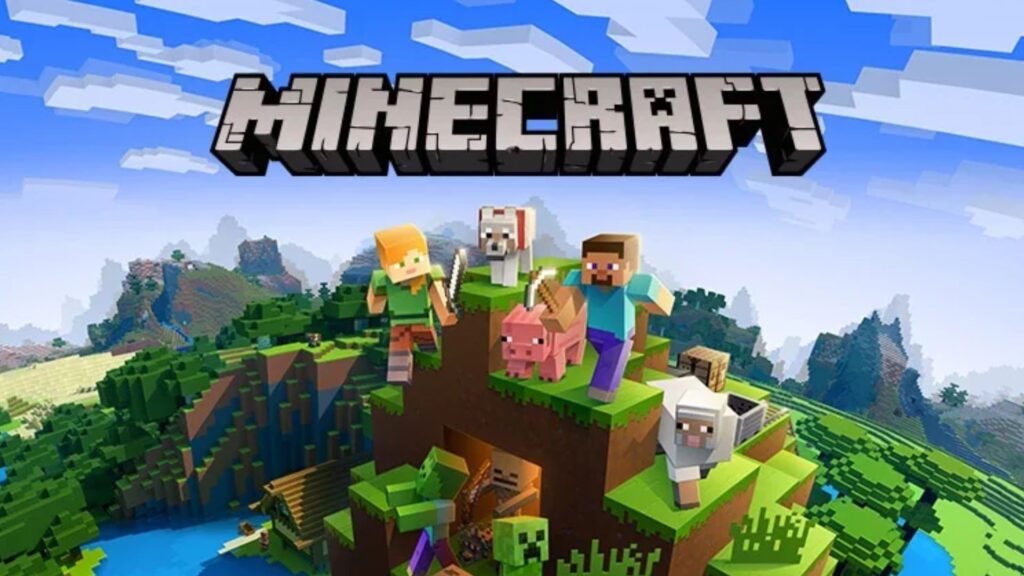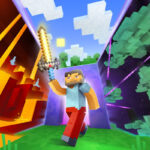Introduction
Minecraft has captivated millions with its blocky charm, endless creativity, and open-world freedom. Its core mechanics—like building, crafting, and exploration—have inspired a generation of gamers to think beyond just playing games and start creating them. But what if you could build your own Minecraft-inspired game from scratch, even without advanced technical knowledge?
In 2025, powerful and user-friendly game engines make this entirely possible. With the rise of visual scripting, voxel toolkits, and no-code platforms, aspiring developers and creative thinkers can bring their ideas to life—without ever writing traditional code.
This guide will walk you through the step-by-step process of creating your own Minecraft-like game. From understanding core mechanics and choosing the right engine to designing terrain, implementing gameplay systems, and publishing your finished product, you’ll gain all the insight needed to begin your game development journey with confidence.
Let’s turn your vision into a playable world.
Understanding the Core Mechanics of Minecraft
To build a Minecraft-inspired game, you must first understand the mechanics that make Minecraft so compelling. At its core, Minecraft thrives on a balance between simplicity and depth, offering players endless freedom within a structured system.
Voxel-Based World
The entire game world is made up of voxels—3D cubes that represent blocks of materials like dirt, stone, water, and wood. This allows for full player interaction with the environment, including placing, removing, and modifying the terrain. Voxel-based design makes the game world feel both editable and infinite.
Crafting and Survival
One of Minecraft’s signature features is its crafting system. Players gather resources and combine them to create tools, weapons, and building materials. In Survival Mode, players must manage hunger, health, and hostile mobs—adding strategy and risk to exploration.
Exploration and Progression
Procedural generation creates unique biomes, cave systems, and structures. Combined with an open world and minimal tutorials, Minecraft encourages exploration and discovery, rewarding curiosity and experimentation.
Multiplayer and Modding
Minecraft allows users to collaborate in shared worlds and offers deep modding capabilities. This has led to the development of thousands of custom maps, servers, and minigames—creating a dynamic, player-driven ecosystem.
By understanding these core elements—voxel terrain, crafting, survival, and multiplayer—you’ll have a strong foundation for building a similar experience. The goal isn’t to copy Minecraft, but to capture its spirit of creativity and open-ended gameplay in your own unique project.
Planning Your Game Vision
Before diving into development, it’s essential to plan your game vision—the creative blueprint that will guide every step of your Minecraft-inspired project. Without a clear direction, it’s easy to get overwhelmed or sidetracked by features that don’t support your core idea.
Define Your Game’s Purpose
Ask yourself: What kind of experience do I want to create? Will your game focus on survival, like Minecraft’s original mode, or emphasize creativity, exploration, or story-driven quests? Defining your genre and tone helps shape your mechanics, visuals, and player interactions.
Know Your Target Audience
Are you building this game for children, casual players, competitive users, or educators? Understanding your audience will influence difficulty, interface design, visual style, and platform choice (e.g., PC, mobile, or browser).
Outline the Core Gameplay Loop
Every good game has a repeatable gameplay cycle. In a Minecraft-like game, this might be:
- Gather → Craft → Build → Explore → Survive
Or for creative mode:
- Build → Decorate → Share
Sketch out this loop to ensure your mechanics support player engagement and progression.
Start with a Minimum Viable Game
Instead of building everything at once, start small. Create a basic prototype with core mechanics—like mining, crafting, or placing blocks—and expand from there. This approach allows for faster testing, feedback, and improvement.
A solid game vision doesn’t just keep development on track—it ensures your final product is focused, enjoyable, and uniquely yours.
Choosing the Right Game Engine in 2025
Selecting the right game engine is one of the most important decisions when building a Minecraft-inspired game. In 2025, the landscape of game development tools continues to evolve—offering more power, accessibility, and visual scripting options than ever before.
Unity + Bolt (Visual Scripting)
Unity remains a top choice for sandbox-style games. With Bolt, Unity’s node-based visual scripting system, you can build complex mechanics like crafting systems, block placement, and player movement—all without writing traditional code. Unity also supports voxel plugins such as MagicaVoxel, Voxeland, or MicroVerse, perfect for terrain building.
Godot 4.0 + VisualScript
Godot is an open-source, lightweight engine with built-in visual scripting via VisualScript. With its scene-based design and strong community, Godot is ideal for indie developers looking for flexibility without licensing costs. Add-ons like Zylann’s Voxel Terrain extend its capabilities for Minecraft-like environments.
Core Games
Core offers a no-code environment for building multiplayer 3D games using Unreal Engine tech. It’s ideal for creators who want a plug-and-play experience with built-in assets, terrain editors, and game templates.
Roblox Studio
Although scripting with Lua is optional, Roblox Studio provides powerful building tools and multiplayer support. It’s best suited for social games and monetization through in-game purchases.
Choosing your engine depends on your skill level, goals, and target platform. Whether you prefer full control or drag-and-drop simplicity, 2025 offers the perfect tool for every Minecraft-inspired vision.
Building the World: Terrain, Biomes & Structures
One of Minecraft’s most iconic features is its dynamic, blocky world filled with diverse biomes and structures. Recreating this level of environmental interaction is a major step in building your own Minecraft-inspired game.
Voxel Terrain Generation
To mimic Minecraft’s terrain, you’ll need to implement voxel-based environments—worlds made from cubes or 3D blocks. Many engines like Unity (with voxel plugins) and Godot (with Zylann’s Voxel Tools) support voxel systems that allow players to dig, build, and manipulate blocks in real time.
Biome Diversity
Biomes add variation and excitement to exploration. Think deserts, forests, snowy mountains, or underground caves. Each biome can have its own block types, mobs, and weather conditions. Procedural generation tools can help create seamless transitions between biomes and ensure every world feels unique.
Handcrafted Structures
Beyond the randomly generated terrain, you can design custom villages, dungeons, or monuments to guide player progression and exploration. Tools like World Machine, Voxel Farm, or Unity’s ProBuilder are great for creating and importing custom structures.
Save & Load Mechanics
Don’t forget to implement save/load systems that allow terrain changes to persist across sessions. This is critical for sandbox gameplay and encourages long-term player engagement.
Ultimately, your game world should feel alive and editable—a place where players are not just visitors but active participants in shaping the environment.
Implementing Core Mechanics Without Coding
Core mechanics are what define gameplay—things like movement, crafting, mining, and health systems. In a Minecraft-inspired game, these mechanics must feel intuitive, interactive, and rewarding. The good news? You can implement them effectively in 2025 using visual scripting tools, without writing a single line of code.

Player Movement & Camera Control
Basic mechanics like walking, jumping, and looking around can be built using visual scripting tools in engines like Unity (with Bolt) or Godot (with VisualScript). These systems let you connect logic nodes visually, simulating player input and physics behaviors.
Block Interaction (Break & Place)
Voxel plugins for Unity or Godot allow players to destroy or place blocks, just like in Minecraft. You can use node-based triggers to detect collisions and replace block data, making the environment fully interactive.
Inventory & Crafting Systems
Tools like Core, Buildbox, and Unity’s UI components allow you to design drag-and-drop inventory screens and crafting tables using visual logic. Combine inventory slots with item-checking nodes to enable basic recipes and tool upgrades.
Health, Hunger & Survival Stats
Timers, sliders, and condition nodes let you implement player stats like hunger or damage. You can design events that trigger when the player loses health or fails to eat—mirroring Minecraft’s survival tension.
By using these no-code or low-code tools, you can create a deep and immersive gameplay loop—proof that you don’t need programming skills to build a truly engaging game.
Designing the User Interface (UI)
A clean, functional User Interface (UI) is essential in any Minecraft-inspired game. It’s the bridge between the player and the world, guiding their actions and delivering critical feedback. In 2025, no-code and low-code platforms offer intuitive UI design tools that make crafting interfaces both easy and powerful.
Essential UI Elements
Your game should include core components such as:
- Inventory grids for storing and selecting items
- Hotbars for quick access to tools or blocks
- Crafting windows to display available recipes
- Health and hunger bars for survival elements
- Pop-up notifications or alerts for in-game updates
These elements help players interact seamlessly with your mechanics and maintain immersion.
Building UI Without Coding
Platforms like Unity (UI Builder + Bolt), Godot, and Core let you design UIs visually. Drag-and-drop elements, anchor points, condition-based visibility, and event triggers make it possible to create responsive interfaces without scripting.
For example, you can connect a health variable to a visual progress bar or use a trigger node to display an alert when inventory is full.
Keep It Intuitive and Minimal
A Minecraft-inspired game benefits from a minimalist design. Don’t overload the screen—prioritize clarity, contrast, and consistency. Use simple icons, legible fonts, and smooth animations to enhance user experience.
A great UI doesn’t just look good—it empowers the player. By making your interface intuitive, you ensure your world is not only playable, but truly enjoyable.
Adding Sound, Music, and FX
Sound is a powerful element that brings your Minecraft-inspired game to life. Whether it’s the crunch of footsteps on gravel, the swoosh of a sword swing, or the ambient hum of a mysterious cave, audio cues enhance immersion and provide players with valuable feedback.
Sound Effects (SFX)
Use audio to reinforce actions—placing a block, crafting an item, or defeating an enemy should trigger distinct sound effects. Most engines, like Unity and Godot, let you add audio clips to events using visual scripting. Simply link a sound node to an action, such as opening a chest or breaking a block.
Background Music
Dynamic background music adds mood and depth to your world. Loop soft ambient tracks during exploration, switch to intense music during combat, and play calming tunes at night or in safe zones. Royalty-free libraries like Freesound, Kenney, or OpenGameArt offer excellent free options.
Visual Effects (VFX)
Pair sound with visual effects like particle systems for block-breaking, weather transitions, or crafting sparks. These subtle animations elevate the user experience and reinforce interactions.
Great audio and effects don’t just entertain—they immerse players and strengthen emotional engagement with your game.
Testing, Optimization, and Feedback Loops
Once your Minecraft-inspired game is functional, it’s time to refine it through testing, optimization, and player feedback. This stage is critical—it ensures your game is not only playable but enjoyable, stable, and engaging.
Playtesting
Start by playing your game from the player’s perspective. Test every core mechanic: block interactions, crafting, movement, UI responses, and game logic. Identify bugs, unclear instructions, or performance issues. Then, invite a few external players to test your game and observe their behavior. Do they get stuck? Do they understand the objectives? These insights are invaluable.
Optimization
A smooth game experience is essential, especially with voxel worlds and dynamic environments. In engines like Unity or Godot:
- Optimize block rendering using chunking or level-of-detail (LOD)
- Reduce unnecessary physics calculations
- Compress textures and audio files to reduce memory usage
- Aim for consistent frame rates and minimal loading times, especially on lower-end devices.
Feedback Loops
Collect and implement player feedback regularly. Use surveys, Discord communities, or in-game feedback forms. Iterative updates—fixing bugs, adjusting difficulty, enhancing UX—show your commitment to quality and keep players engaged long-term.
Testing isn’t a one-time task—it’s an ongoing cycle that transforms your good idea into a great game. With the right feedback loop, your Minecraft-like project can evolve into a polished, replayable, and community-driven experience.
Packaging and Publishing Your Game
After testing and polishing your Minecraft-inspired game, the next step is sharing it with the world. Whether you’re targeting casual players, fellow developers, or a wider gaming audience, proper packaging and publishing are key to making your project accessible and successful.
Packaging Your Game
Most game engines—like Unity, Godot, and Core—allow you to export your game for multiple platforms, including Windows, macOS, WebGL, Android, and iOS. Before exporting:
- Ensure all assets are included in the build
- Set correct spawn points or menus as default scenes
- Add version numbers and changelogs
- Compress files for fast downloads
Create a simple installer or ZIP archive with clear instructions for players. Include a readme file that explains controls, game objectives, and system requirements.
Publishing Platforms
Choose the right platform based on your audience:
- Itch.io – Great for indie devs and free distribution
- Steam – Ideal for commercial release (requires approval and Steamworks setup)
- Core Games – Instant publishing within the Core ecosystem
- Roblox – For multiplayer and monetized games targeting younger audiences
Promotion and Community Building
Promote your game via YouTube trailers, Reddit posts, Discord communities, and social media. Engage players by collecting feedback, offering updates, or creating behind-the-scenes content.
Publishing isn’t the end—it’s the beginning of your game’s journey. A strong launch sets the stage for long-term visibility, community engagement, and potential growth.
Bonus: Monetizing Your Minecraft-Inspired Game
If you’ve poured time and creativity into building a Minecraft-inspired game, you may want to turn your project into a revenue-generating opportunity. In 2025, there are more ways than ever to monetize your game—ethically and effectively.
1. Sell Your Game
Platforms like Itch.io, Steam, and Epic Games Store allow indie developers to sell games directly to players. Offer a free demo to attract users and upsell a full version with expanded features, biomes, or multiplayer support.
2. In-Game Purchases
Use in-app purchases to offer skins, character customizations, new block types, or expansion packs. Ensure these are cosmetic or optional so as not to disrupt gameplay fairness.
3. Server Monetization
If your game supports multiplayer, you can host dedicated servers with premium features or subscription models—similar to how Minecraft servers monetize through ranks, kits, or exclusive areas.
4. Donations & Crowdfunding
Platforms like Ko-fi or Patreon let your audience support development. Share your roadmap and offer perks to backers, such as early access or exclusive builds.
With the right strategy, your game can be both a creative outlet and a sustainable project that rewards your effort and fuels future development.
Conclusion
Building a Minecraft-inspired game from scratch in 2025 is more achievable than ever—thanks to accessible tools, no-code platforms, and powerful game engines with visual scripting. Whether you’re an aspiring developer, a creative hobbyist, or an educator, you now have the means to bring your sandbox game idea to life without writing a single line of code.
By understanding Minecraft’s core mechanics, planning your vision, choosing the right engine, and refining your game through testing and feedback, you can create a truly engaging experience that players will love. And with the option to publish and monetize your game, your creative project can evolve into something even bigger.
Remember, every successful game starts with a simple idea and the courage to build. So pick your tools, trust your process, and start shaping your world—block by block, system by system. Your journey as a game creator begins now.



